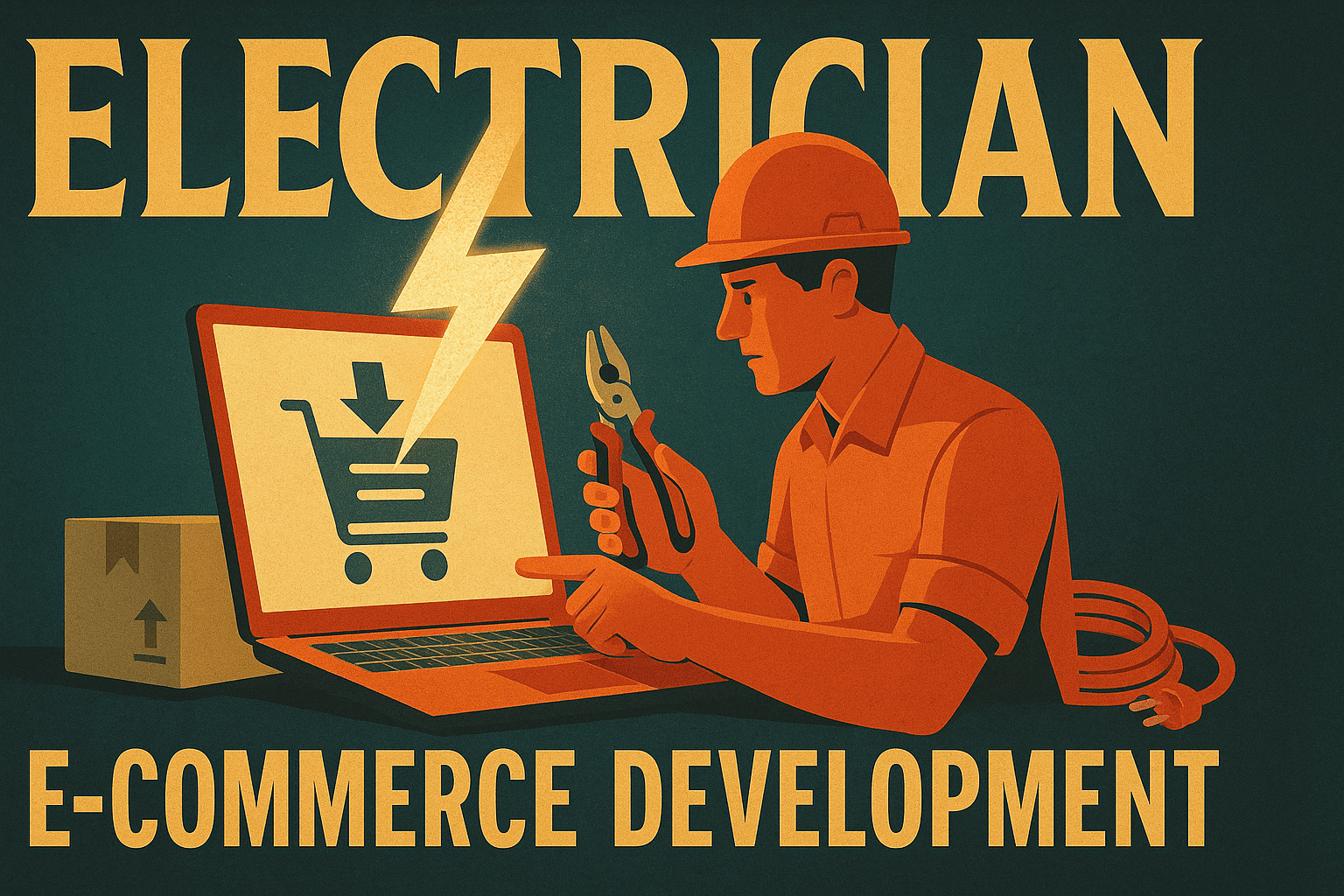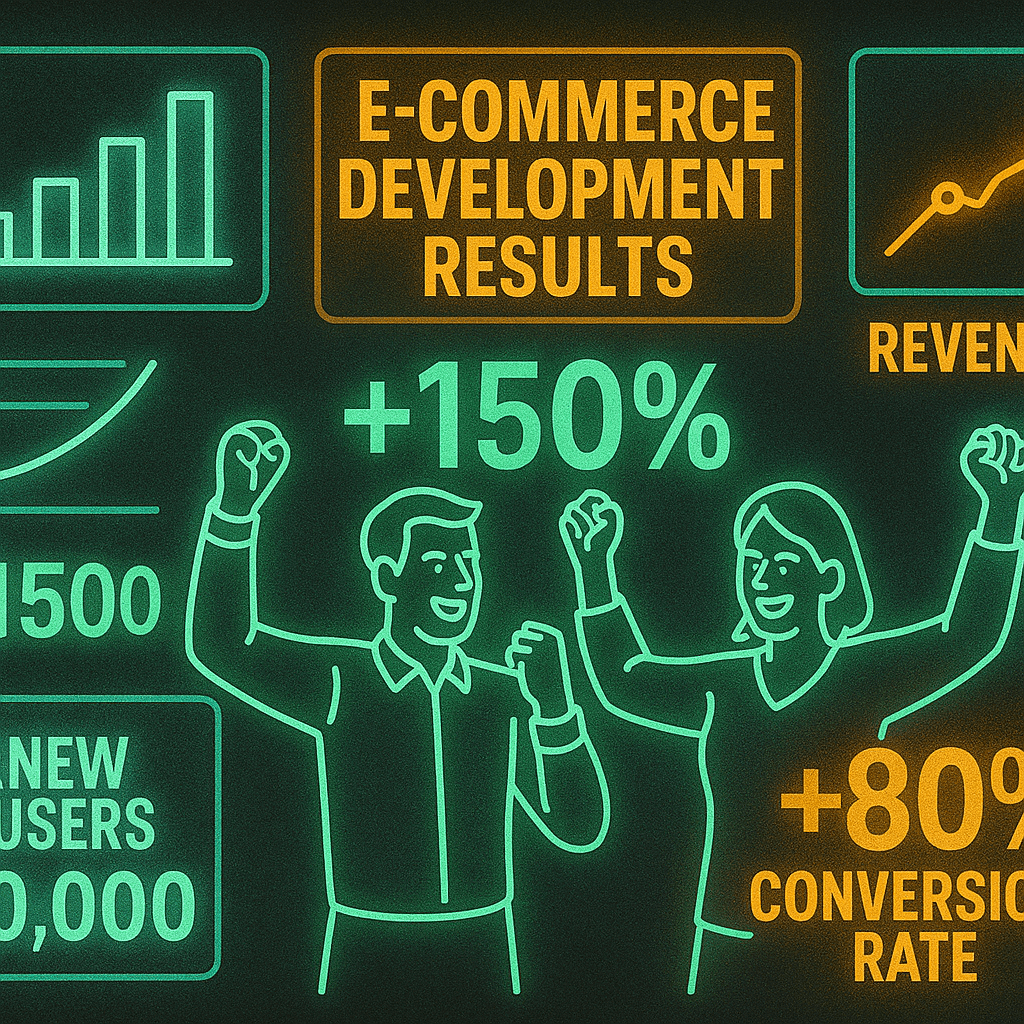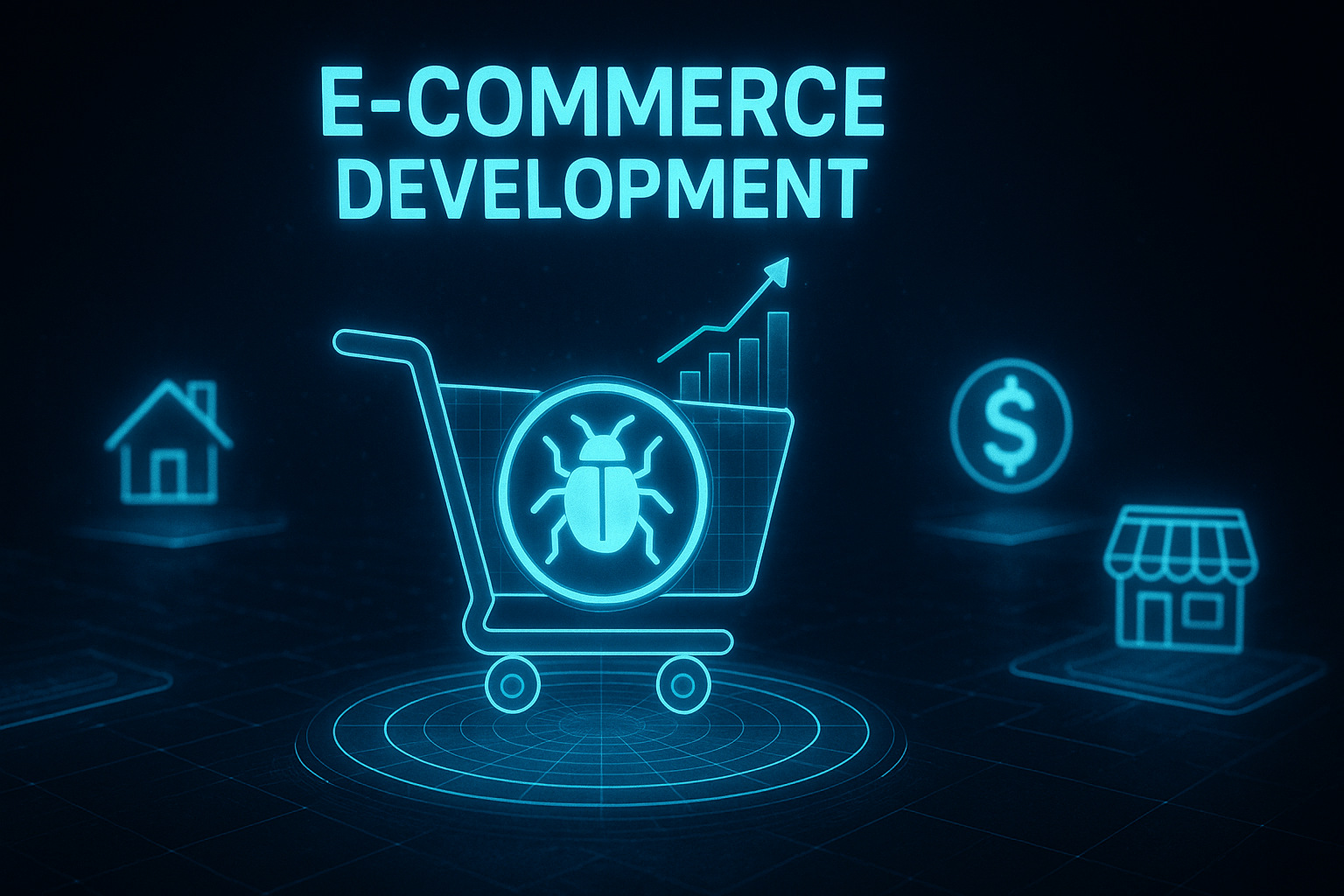E-commerce Development for Electricians: Complete 2026 Implementation Guide
by Design Delulu Editorial · October 5, 2025

The electrical supply industry is shifting online faster than ever. Contractors, facilities managers, and DIY customers expect to browse inventory, compare specifications, and complete purchases without picking up the phone. For electricians selling products—whether wire, fixtures, panels, or specialty equipment—a well-built e-commerce platform isn't optional anymore. It's the difference between capturing after-hours demand and losing sales to competitors with 24/7 digital storefronts.
E-commerce development for electricians goes beyond throwing products onto a template site. It requires strategic product categorization, technical spec presentation, bulk pricing logic, and checkout flows that accommodate both one-time buyers and repeat commercial accounts. When executed properly, your online store becomes a revenue engine that works while you're on job sites, generates qualified leads through product discovery, and builds customer loyalty through convenience and transparency. This guide walks you through the complete development process—from planning and architecture to launch optimization and ongoing performance tracking.

Why Electricians Need Specialized E-commerce Development
Generic e-commerce platforms fail electrical businesses because they don't account for industry-specific buying behaviors. Electricians deal with complex product hierarchies—wire organized by gauge and insulation type, breakers sorted by amperage and compatibility, fixtures categorized by voltage and housing rating. Your customers need advanced filtering, spec sheet downloads, and compatibility checkers that typical retail templates simply can't handle.
Commercial buyers present unique challenges too. They expect account-specific pricing, quote request functionality, and the ability to reorder from previous jobs quickly. Residential customers want educational content explaining which products solve their specific problems. A specialized e-commerce development approach addresses these needs through custom taxonomies, dynamic pricing engines, and content strategies that map to different buyer personas and purchase stages.
The technical demands are equally critical. Large product catalogs require performance optimization to maintain fast load times. High-resolution product images and specification PDFs need efficient delivery systems. Integration with inventory management, accounting software, and supplier databases demands robust backend architecture. When you invest in e-commerce development built specifically for electrical supply businesses, you create a competitive advantage that compounds over time.
Core Components of Electrician E-commerce Platforms
Successful e-commerce platforms for electricians rest on four foundational elements: product presentation, navigation architecture, conversion optimization, and backend systems. Each component requires careful planning and technical execution to deliver a seamless buying experience.
Product Pages That Convert
Product detail pages (PDPs) for electrical supplies must balance technical precision with persuasive copywriting. Each listing needs clear product titles with key specifications, comprehensive technical details including certifications and compatibility information, high-quality images showing multiple angles and scale, and specification sheet downloads in PDF format. Beyond basic information, winning PDPs include installation guidance, application examples, and related product suggestions that increase average order value.
Product descriptions should anticipate customer questions and objections. For a circuit breaker, explain which panel types it fits, what load calculations support the amperage rating, and whether it meets local code requirements. Use bullet points for quick scanning and longer paragraphs for detailed specifications. Include customer reviews with verification badges for commercial accounts. The goal is building confidence that eliminates friction in the buying decision.
Navigation and Search Functionality
Electrical product catalogs are deep and complex. Your navigation must support multiple discovery paths. Category-based browsing lets users drill down through logical hierarchies—wiring and cable, then romex, then specific gauges. Faceted search enables filtering by multiple attributes simultaneously—voltage rating, wire gauge, length, and insulation type. Text search with autocomplete helps users who know exactly what they need find it fast.
Smart search goes beyond exact matches. It recognizes synonyms (knowing "receptacle" and "outlet" mean the same thing), handles misspellings gracefully, and surfaces relevant accessories. When someone searches for a specific light fixture, show compatible bulbs and mounting hardware. Build guided finders for complex products—a panel selector tool that asks about service amperage, space requirements, and feature needs, then recommends appropriate options.
Checkout Optimization
Cart abandonment kills revenue. Streamlined checkout processes recover sales that clunky flows lose. Start by offering guest checkout alongside account creation. Show clear progress indicators across checkout steps. Pre-fill addresses using autocomplete. Display shipping costs and delivery timeframes before the payment page. Offer multiple payment methods including credit cards, PayPal, and net terms for commercial accounts.
Reduce friction at every step. Save incomplete carts so customers can return later. Send abandonment emails with incentives. Provide live chat support during checkout. For commercial buyers, enable purchase order uploads and approval workflows. The technical implementation matters too—fast page loads, mobile optimization, and security badges all boost conversion rates. Every percentage point improvement in checkout completion flows directly to bottom-line revenue.

Building for Scale and Performance
E-commerce platforms must handle growth without degradation. As you add products, traffic increases, and order volume rises, your site architecture needs to maintain fast load times and reliable functionality. Performance optimization starts with technical foundations and continues through ongoing monitoring and refinement.
Technical Architecture
Choose platforms and hosting solutions designed for e-commerce scale. Headless commerce architectures separate the frontend experience from backend systems, enabling faster page loads and easier updates. Content delivery networks (CDNs) distribute assets globally for consistent speed regardless of customer location. Database optimization ensures quick queries even with tens of thousands of SKUs. Implement caching strategies that balance freshness with performance—product pages can cache longer than inventory counts.
Mobile performance deserves special attention. Most electrical supply research now happens on phones, even if final purchases occur on desktop. Responsive design ensures usability across devices. Progressive web app (PWA) functionality enables offline browsing and faster repeat visits. Image optimization reduces bandwidth without sacrificing quality. Lazy loading defers non-critical assets until needed. Every 100-millisecond improvement in load time measurably increases conversion rates.
Inventory and Order Management
Backend systems make or break operational efficiency. Real-time inventory synchronization prevents overselling and customer disappointment. Automated order routing sends fulfillment instructions to the right warehouse or supplier. Integration with accounting software eliminates manual data entry. Customer account portals let commercial buyers track orders, download invoices, and view purchase history without calling your office.
Build for automation wherever possible. When inventory hits reorder points, trigger supplier purchase orders automatically. Send shipping confirmations with tracking links. Enable customers to initiate returns through self-service portals. Generate analytics dashboards that surface actionable insights—which products drive the most margin, which customer segments show the highest lifetime value, which marketing channels deliver the best return on ad spend.
Data-Driven Optimization and Growth
Launch is just the beginning. Continuous improvement based on real user behavior separates good e-commerce sites from great ones. Proper analytics instrumentation and disciplined testing culture compound gains over time.
Analytics and Measurement
Implement comprehensive tracking from day one. Beyond standard e-commerce metrics like conversion rate and average order value, track electrical industry-specific KPIs. Monitor quote request submission rates, spec sheet downloads, and product comparison tool usage. Measure how different customer segments behave—residential DIY versus licensed contractors versus facilities maintenance teams. Track cohort retention to understand which acquisition channels bring the most valuable long-term customers.
Set up proper funnel analysis. Where do users drop off between product page views and add-to-cart actions? What percentage of cart additions complete checkout? Which products have high view rates but low conversion? Use heatmaps and session recordings to understand user behavior qualitatively. Create custom alerts for anomalies—sudden drops in conversion rates or spikes in cart abandonment signal technical issues or user experience problems requiring immediate attention.
Testing and Iteration
A/B testing lets you make data-driven decisions rather than guessing. Test product page layouts, call-to-action copy, pricing displays, and shipping offer presentations. Run multivariate tests on checkout flows to find the optimal combination of fields, progress indicators, and trust signals. Test email campaigns, promotional strategies, and personalization approaches. Even small wins compound—a 2% lift in conversion rate, a 5% increase in average order value, and a 10% improvement in customer retention together drive substantial revenue growth.
Establish a regular optimization cadence. Weekly reviews examine recent test results and identify new hypotheses to test. Monthly deep dives analyze cohort behavior and segment performance. Quarterly strategy sessions reassess positioning, product mix, and growth initiatives based on accumulated learnings. The most successful e-commerce operations treat their platform as a living system that evolves based on customer feedback and market dynamics.

Implementation Roadmap
Most electrician e-commerce projects follow a four-phase approach that balances speed to market with strategic foundation building. Understanding this roadmap helps you plan resources and set realistic expectations.
Phase 1: Discovery and Strategy
Start by defining clear success metrics. What revenue targets justify the investment? Which customer segments offer the most growth potential? What product categories should launch first? Audit your existing assets—product data quality, photography inventory, technical documentation completeness. Research competitor sites to understand baseline expectations and differentiation opportunities. Map customer journeys for different personas, identifying pain points your e-commerce experience can solve.
This phase produces detailed specifications including site architecture, feature requirements, integration needs, and content strategy. Establish a realistic timeline accounting for design iteration, development sprints, content creation, and thorough testing. Most electrician e-commerce builds require 8-16 weeks depending on catalog size and custom feature complexity.
Phase 2: Design and Development
Design focuses on visual brand expression and conversion optimization simultaneously. Create templates for product listing pages (PLPs) and product detail pages (PDPs) that scale across your catalog. Design checkout flows that balance information collection with friction reduction. Build component libraries for consistent user experience. Prototype complex features like product finders or bulk order uploads to validate functionality before full development.
Development brings designs to life with clean, maintainable code. Build mobile-first responsive layouts. Implement proper semantic markup for SEO performance. Integrate payment gateways, shipping calculators, and tax calculation services. Connect backend systems for inventory synchronization and order management. Set up staging environments for quality assurance testing before production deployment.
Phase 3: Content and Launch
Content creation often determines launch timeline. Migrate existing product data, cleaning and enhancing as you go. Write compelling product descriptions that educate and persuade. Create category page content targeting relevant search terms. Produce educational resources like buying guides and installation tutorials. Optimize all metadata for search visibility. This phase demands significant effort but pays dividends through organic traffic and conversion rate improvements.
Pre-launch testing ensures quality. Conduct thorough QA across devices and browsers. Test all user flows from discovery through checkout. Verify analytics tracking fires correctly. Confirm email notifications send properly. Stress test performance under load. Fix all critical bugs and document minor issues for post-launch resolution. Plan a soft launch to friendly customers before broader promotion to catch any remaining issues with real users.
Phase 4: Optimization and Scaling
Post-launch, shift focus to systematic improvement. Monitor analytics dashboards daily for anomalies. Collect customer feedback through surveys and support conversations. Run A/B tests on high-impact pages and flows. Expand product catalog methodically, learning from initial category performance. Build out content assets that drive organic traffic. Refine paid advertising based on conversion data and customer lifetime value calculations.
Plan for ongoing evolution. Markets change, competitors adapt, and customer expectations rise. Successful e-commerce operations budget for continuous development—adding features, improving performance, and expanding capabilities based on business growth and user needs. Treat your e-commerce platform as a strategic asset requiring ongoing investment, not a one-time project.
Frequently Asked Questions
Let’s level up your Electricians business
Need services that actually move the needle for Electricians? See our approach, pricing, and timelines—then book a quick call.
Additional Resources
- Schedule a Strategy Call
Book a complimentary 30-minute consultation to discuss your e-commerce goals, technical requirements, and timeline. We'll review your current situation, answer your questions, and outline a customized development approach for your electrical business.
- View Our E-commerce Portfolio
Explore case studies and examples of successful e-commerce platforms we've built for electrical businesses and skilled trades professionals. See real results, conversion improvements, and revenue growth from our client projects.
- Free E-commerce Tools & Resources
Access our library of free calculators, templates, and planning tools designed specifically for electricians building online stores. Includes ROI calculators, product data templates, SEO checklists, and conversion optimization guides.
Related Reading

Professional e-commerce development for photographers & videographers. Sell prints, packages & digital downloads with optimized product pages, smart checkout flows & analytics that track what sells.

E-commerce development for fashion retail that drives conversions. Get optimized PDPs, streamlined checkout, merchandising strategies, and analytics. See results in 4-8 weeks.
